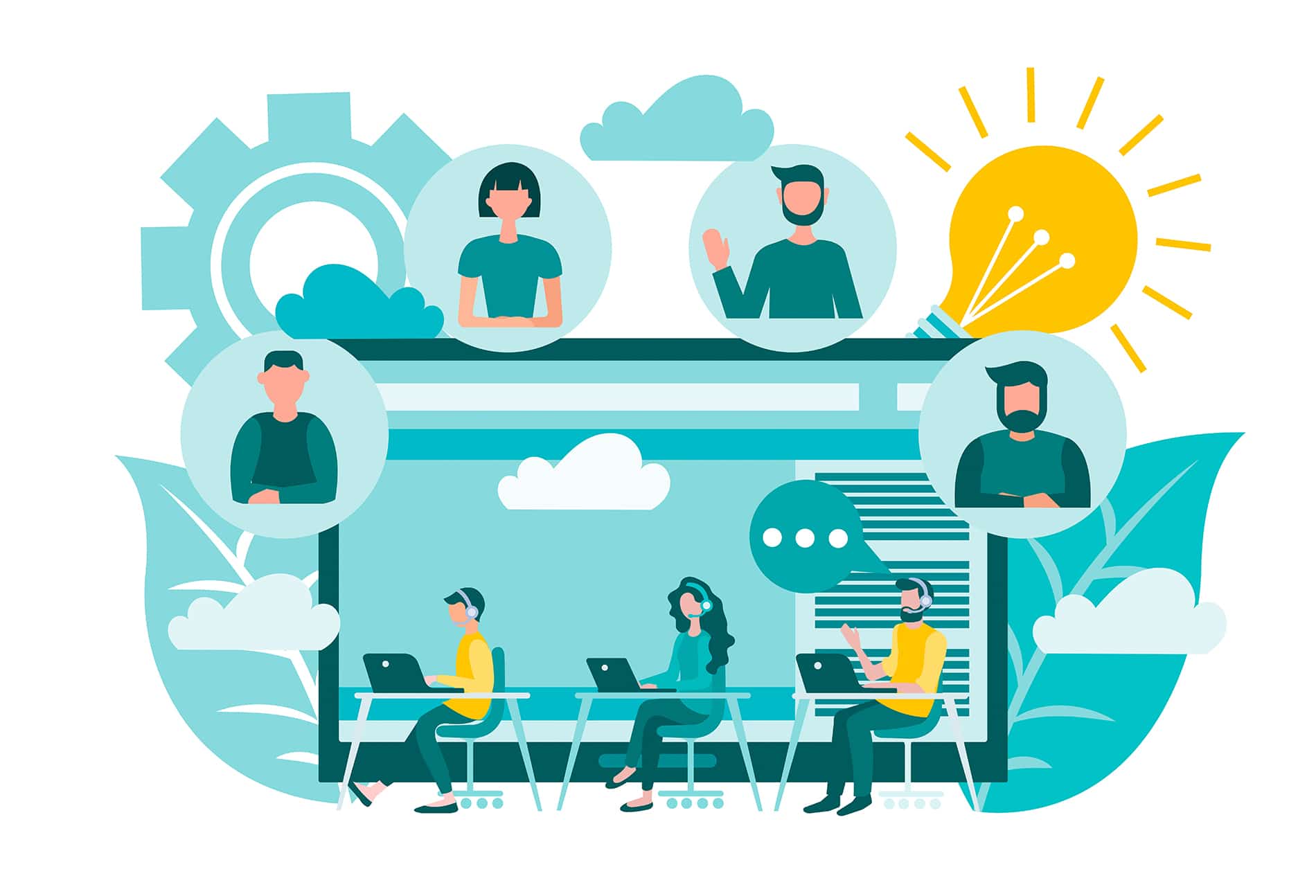What is Self-Service?
In IT Service Management (ITSM) self-service is the practice of providing a knowledge base within a portal that users can go to and find answers to common questions and problems – allowing them to solve their own problems without having to put in a ticket or contact the help desk.
The benefits of ITSM self-service are numerous. First, it saves the IT department time by routing routine requests away from busy support staff. Second, it helps to promote a culture of self-reliance and empowerment within the organization by giving employees the ability to resolve simple issues on their own. Finally, it provides the IT department with valuable data that can be used to improve service delivery and address areas of need within the organization.
While self-service is widely recognized as being a valuable part of IT Service Management, with 81% of organizations reporting they have a knowledge base and 56% running a self-service portal, according to a recent market study, out of those with a knowledge base only 5% say it is fully maximized and updated. In addition, only 25% of organizations with a self-service portal say it is highly adopted and effective.
Creating a knowledge base and self-service portal is a great first step to better ITSM delivery, but without continually updating the knowledge base to contain relevant and helpful information and implementing the service portal in a way that generates a lot of buy-in, neither will be able to serve their true purpose. This means that organizations need to put more focus on creating self-service experiences in a way that makes people want to utilize them.
Creating an Easy-to-Use, Searchable Portal and Knowledge Base
One of the most efficient ways to improve ITSM and service desk delivery is by removing the need for starting a ticket in the first place—by empowering users to answer their own questions and solve their own problems before an issue requires human intervention.
In general, people would much rather resolve issues themselves instead of submitting a service request and waiting for a response. With the increasing desire for more self-service options, it is essential for those in IT to respond accordingly. Having a well-organized portal with the ability to search for solutions by keywords or tags goes a long way in quickly helping users get the information they need.
Self-service models that deflect calls from the helpdesk to the portal and give users access to an intuitive, timely catalog of technical knowledge not only improve customer satisfaction, they also dramatically reduce the per-incident cost incurred by IT.
Simplicity is key when designing the layout for a client portal. Users should not need to scroll or navigate extensively to find what they are looking for, nor should it take them longer than a few minutes. Outlined information written in understandable, everyday language is essential to encouraging self-service.
Ideally, your ITSM software should offer an out-of-the-box self-service portal with a knowledge base (KB) that’s easily configurable and can be personalized with your organization’s branding WITHOUT any coding or scripting. In addition, the portal should be WCAG 2.0 AA compliant and fully accessible.
Here are four questions you can ask about portal and KB capabilities when evaluating ITSM vendors:
- Can I create a portal with my own branding? The portal should allow for branding and design without requiring HTML or technical resources to code the content. It should be easy to manage across multiple departments and entities, allowing for individualized branding.
- Does it interface with a knowledge base and offer automation? The self-service portal needs to offer the ability to deploy a knowledge base that can search across articles using natural language and tagging. Being able to find information, and having that information relevant and accurate, is key to success. If your end-users perceive the articles to be erroneous or outdated, then adoption of the self-service platform will suffer.
- Can you manage the knowledge base content easily? You should have the ability to manage publication dates and evaluate usage. The knowledge base also needs to accommodate a feedback loop, taking comments or even net new content, and pushing that through an iterative review process. This is called Knowledge-Centered Service® (KCS). The knowledge base must support this framework so that you can stay current. Also, if customers or employees can’t resolve their issues using the information found on the portal or knowledge base, there needs to be a button they can click to quickly submit a ticket or a request. That ticket/request should route directly to the appropriate technician or departmental resource.
- Is the portal WCAG 2.0 AA Compliant? Accessibility is a very important topic, and in order to adhere to strict standards, it’s best to deploy an end-user portal that is already WCAG 2.0 AA compliant out of the box. This means that you can create new content and present services without the additional worry that your portal is not compliant or accessible. WCAG 2.0 AA compliant out-of-the-box is critical, particularly if you are servicing end-users in education or the public sector.
“With a self-service portal in place, we quickly saw an 18% reduction in time logged to service tickets.”
Using Knowledge-Centered Service to Build, Maintain Content
Crowdsourcing knowledge can be a fast and accurate way to build a knowledge base. In fact, a recent market study found that 51 percent of respondents will be implementing KCS to quickly bolster their knowledge base. There’s no question that KCS should be a valuable part of your organization’s ITSM processes. The principles of KCS stipulate that the creation and maintenance of knowledge must be fully integrated into the most important support operations.
Here are a few reasons why Knowledge-Centered Service can be so powerful:
- Helps to continually lower inbound call volume.
- Increases customer satisfaction.
- Provides customers with the answers they need now.
- Crowdsourcing knowledge helps maintain accurate content.
- Offers opportunities for professional development and career progression.
By adopting KCS, you can not only improve customer satisfaction but dramatically reduce the per-incident cost incurred by IT (from about $22 for a level 1 support call to $2 for self-service); and reduce the volume of issues and requests coming to the help desk, allowing IT to reallocate technicians to higher priority tasks and projects.
Optimizing Your Portal with Human-Centered Design
Incorporating human-centered design is one way to design your self-service portal in a way that will help drive adoption. In short, it is a creative approach to problem-solving that focuses on the users’ needs, and is based on a number of fundamental principles:
- Involve users in the design process from the very beginning: critical design decisions are evaluated based on how they work for end-users.
- Requirement clarification is important: the team always tries to align business requirements with users’ needs.
- Introduce a user feedback loop in the product life cycle: the team collects and analyzes feedback from users regularly. This information helps the team to make more user-focused decisions.
- Iterative design process: the team constantly works on improving user experience; it introduces changes gradually as it gains more understanding about its target audience.
There are three phases to implementing human-centered design:
- The Inspiration Phase – learn directly from the people you are designing for by immersing yourself in their departments and gaining a deep understanding of their needs.
- The Ideation Phase – take what you learned and identify the opportunities for design and come up with possible solutions.
- The Implementation Phase – bring your solution to life.
This kind of design ensures that your portal will be beneficial to those who use it. Instead of guessing the ways in which users need it, you go straight to the user and see it for yourself. This will also help instill trust because employees will be able to see that effort is being put into truly understanding their needs.
Tips for Getting Buy-In and Reducing Time Logged to Service Tickets
Having a customizable and easy-to-use service portal has been a game changer for Ellsworth Adhesives – a global corporation that supplies a wide range of adhesives, sealants, lubricants, coatings, encapsulants, tapes, soldering products, surface preparations, specialty chemicals and dispensing equipment.
Within the IT department, the help desk used to receive about 80 percent of service requests through email, 15 percent through phone calls and walkups and only 5 percent through the service portal.
Now, 95 percent of requests come through the portal, 5 percent come through walkups and the help desk team no longer accepts email requests.
To make it as easy as possible for people to use the service portal, the IT department created an app that opens the portal automatically on employees’ desktops.
“We were getting 80 to 90 service requests per day, and the help desk team couldn’t filter and rout them all quickly enough,” Adam Crichlow, IT service desk manager, said. With the portal, however, this all happens automatically. This shift alone has cut the time it takes from creating to resolving a service ticket nearly in half.
Using TeamDynamix “has freed up staff time right away,” Crichlow said—a benefit the company realized “almost on day one” of using the system.
As other departments have seen the efficiencies that TeamDynamix has created, they’ve also adopted the ESM system. The latest department to create its own service portal using the platform is the Environmental Health and Safety team, which never used the old ticketing system for service management before.
The University of South Dakota (USD) struggled with knowledge residing in silos across various departments as well as poor communication, leading to inefficiencies when delivering service.
Katharina Wymar, head of Project Management, said “We lacked that one platform, that one mindset that allowed us to share knowledge.”
That’s when they turned to the solution of a knowledge base so that all of their information could be in a single, easily accessible location.
After building out their knowledge base and implementing KCS they quickly saw an 18% reduction in time logged to service tickets, and after six months there were 31,000 users, 262,000 page views, and 5,000 knowledge articles being included in the base.
Based on USD’s experience Wymar shared these keys to successfully implementing KCS for your ITSM platform:
- Look for executive sponsorship. “This project is going to take time to work through, and our CIO was our biggest supporter,” Wymar says.
- Find the right solution for your organization and get trained.
- Set your KCS processes and develop a communications plan to keep everyone engaged.
- Celebrate success. Reward both the quality and usage of articles. “Make sure you’re recognizing the right behaviors,” Cottrell advises. Don’t turn it into just a numbers game. Encourage people to contribute their knowledge, and reward them for their article edit requests, article usage, and the quality of their articles. Recognize team members as they move up in responsibility.
Looking for examples of stellar self-service portals? Check these out.

